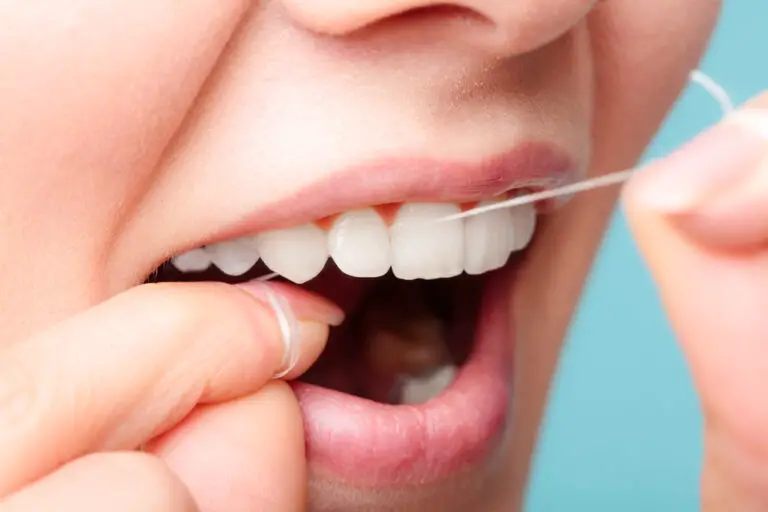Pain in the jaw can have many causes, including temporomandibular joint disorders, injuries, arthritis, sinusitis, and tooth infections. While jaw pain alone does not confirm a tooth infection, it can be one sign of a problem when paired with other symptoms. Recognizing the signs of a possible tooth infection and seeking prompt treatment are important to prevent complications.
What causes tooth infections?

Tooth infections, also called dental abscesses, happen when bacteria enter the pulp of the tooth through a crack, chip, or other opening. The pulp contains nerves, blood vessels, and connective tissue that help the tooth grow and remain alive.
Bacteria can enter through:
- Cavities – Cavities that go untreated allow bacteria to work down through the enamel and dentin layers to infect the pulp.
- Gum disease – Infection and inflammation of the gums can spread into the roots of the teeth.
- Trauma – Cracks or chips from an injury can expose the inner layers of the tooth.
- Previous dental work – Procedures like root canals or tooth extractions can become infected.
Once inside the pulp, the bacteria multiply quickly. White blood cells rush to the area to fight the infection, causing inflammation and pus to build up inside the tooth. The pus continues spreading as the infection grows, forming an abscess.
Signs and symptoms of a tooth infection
A tooth infection may cause any of the following signs and symptoms:
Jaw, mouth, and dental pain
- Toothache – Severe, persistent pain in the affected tooth that can radiate to other areas of the mouth. It may be worse when eating or drinking hot/cold foods.
- Jaw pain – Aching, swelling, or discomfort in the jaw.
- Gum pain – Red, swollen gums that hurt.
- General mouth pain – Soreness of the mouth, cheeks, tongue, lips, or face.
Swelling
- Face/cheek swelling – A swollen lump or enlarged, puffy area on the face or cheek near an infected tooth.
- Gum swelling – Gums that appear red, shiny, and puffy near an infected tooth.
Drainage
- Bad breath – Foul-smelling odor from the mouth.
- Metallic taste – Unpleasant, metallic taste in the mouth.
- Abscess – Pocket of pus draining through a sore on the gums.
Other signs
- Tooth sensitivity – Increased sensitivity to hot or cold around an infected tooth.
- Tooth discoloration – Gray, brown, or black discoloration of the tooth.
- Tooth looseness – Increased tooth looseness or feeling like the tooth is moving.
- Fever and chills – Low-grade fever, fatigue, and body aches if infection spreads.
When jaw pain indicates a tooth infection
Jaw pain can have many causes not related to dental problems. But if jaw discomfort occurs along with other symptoms of an infected tooth, it can help identify the location and severity of infection.
See a dentist promptly if jaw pain occurs with:
- Toothache – Persistent toothache suggests infection in or around that tooth. Jaw pain spreading from a single tooth could mean the infection is draining or spreading.
- Swollen gums – Jaw pain with puffy, red gums indicates infection draining from the tooth’s root into the surrounding gum tissue.
- Pus – Foul-tasting drainage, an abscess on the gums near a tooth, and jaw pain signal an active infection draining from the tooth.
- Tooth or gum sensitivity – Increased sensitivity to temperature extremes often accompanies a spreading tooth infection, along with jaw discomfort.
- Tooth discoloration or looseness – Jaw soreness with a loose, darkened tooth can mean infection within the tooth has damaged surrounding bone and ligaments.
Let your dentist know if jaw discomfort occurs along with concerning dental symptoms. Prompt treatment is key to preventing complications.
Complications of untreated tooth infections

Without treatment, a tooth infection won’t resolve on its own. Potential complications include:
Spreading infection
The infection can continue spreading into surrounding teeth, tissues, and bones:
- Gum disease – Gum infections can damage tissue and bone, increasing tooth looseness.
- Sinus infection – Upper tooth infections may spread into the sinus cavities.
- Bone loss – Abscesses can destroy jaw bone around tooth roots or cause bone infections.
- Ludwig’s angina – Rarely, cellulitis or abscesses under the jaw can swell and restrict the airway. This medical emergency requires hospitalization.
Systemic effects
If bacteria enter the bloodstream, they can travel to other areas of the body:
- Sepsis – A life-threatening systemic infection that causes organ failure, septic shock, and death.
- Heart infection – Rarely, bacteria can infect heart valves (endocarditis) and damage the heart.
Pain and tooth loss
Without treatment, damage can lead to:
- Severe tooth pain – Infection may damage the tooth’s pulp irreversibly, leading to a painful tooth needing extraction.
- Tooth loss – Abscesses can destroy periodontal ligaments and bone, causing tooth loss.
- Spread to other teeth – Cavities and infection can spread between neighboring teeth.
Getting an accurate diagnosis
See a dentist as soon as possible if you have jaw pain plus signs of a possible tooth infection. Be prepared to describe your symptoms, including:
- Which specific teeth hurt
- The nature and severity of the pain
- Timing, duration, triggers, and relieving factors
- Presence of swelling, drainage, fever, etc.
Your dentist will likely:
- Examine – Check for swelling, loose teeth, decay, or other dental causes.
- Tap teeth – Tap each tooth to test for pain and sensitivity.
- Order X-rays – Assess for bone loss, infections at the root tips, and other damage.
- Pulp vitality testing – Test nerve function in potentially infected teeth.
- Probe/explore – Use instruments to probe any defects or fistulas draining pus.
These steps help identify which tooth is infected. The location and extent of infection guide treatment.
Treating a tooth infection
Treatment aims to drain infection, relieve pain, resolve inflammation, and save the tooth when possible:
Draining the infection
- Root canal – The pulp is removed and the tooth interior cleaned of infection and sealed.
- Tooth extraction – Removal provides drainage for severe infections, but the gap must later be restored.
- Incision and drainage – A small cut releases pus from gum abscesses for immediate relief.
Controlling pain and swelling
- Antibiotics – Oral or intravenous antibiotics treat spreading infection.
- Anti-inflammatories – Over-the-counter non-steroidal anti-inflammatory drugs relieve pain and swelling.
- Pain medication – Prescription medication temporarily controls severe pain.
Ongoing treatment
- Fillings – Restores structural integrity and prevents food/bacterial entry.
- Root planing – Deep cleaning under the gumline removes infecting bacteria.
- Dental restoration – Bridges, implants, or dentures eventually replace lost teeth.
See a dentist quickly at signs of infection before you develop complications. Call right away if you have difficulty swallowing or breathing.
Prevention and home care tips

Good oral hygiene and regular dental care help prevent tooth infections and jaw pain. Try these home care tips:
Brush and floss carefully – Thoroughly clean all tooth surfaces and gumlines daily.
Use antibacterial mouthwash – Rinse daily with a mouthwash containing cetylpyridinium chloride to reduce bacteria.
Watch for cavities – See a dententist every 6 months to find and fill cavities before they grow large.
Protect teeth – Use a mouthguard during sports and avoid chewing hard items like ice or pens to prevent fractures.
Quit smoking – Smoking increases the risk of gum infections. Seek help to successfully quit.
Manage health conditions – Diabetes, HIV, and cancer increase infection risks. Keep conditions well-controlled.
Relieve swelling – Apply warm compresses and sip cold water to relieve jaw swelling at home before seeing a dentist. Avoid placing heat or ice directly on the skin.
Contact your dentist promptly at the first sign of infection before it spreads or causes complications. Prompt antibiotic treatment, drainage, and dental repair can prevent much more serious consequences.
Frequently Asked Questions
Can a sinus infection cause jaw and tooth pain?
Yes, sinus infections can cause referred pain in the upper jaw and teeth, especially the upper back molars. Congestion and pressure from a sinus infection can radiate into the teeth, making it feel like tooth pain. See a dentist or doctor to identify the exact cause.
What’s the fastest home remedy for a tooth infection?
There is no effective home remedy to cure a tooth infection. The fastest way to start feeling relief is to see a dentist right away for antibiotics or drainage of infection. Over-the-counter pain relievers like ibuprofen may temporarily reduce pain until you can get dental treatment.
Can a tooth infection go away without antibiotics?
A tooth infection will not go away without treatment. Taking antibiotics alone without draining the pus can worsen some infections. It’s crucial to get evaluated by a dentist, as you may need a root canal, tooth extraction, incision and drainage, or a combination of these treatments to fully resolve a tooth infection.
How can you tell the difference between sinus and tooth pain?
Sinus pain is often worse when bending over or when pressure changes. It also causes sinus congestion, runny nose, and headache. Tooth pain occurs when eating or biting down and may cause tooth sensitivity to hot/cold. Dental exams and x-rays help differentiate tooth vs. sinus pain sources.
When does jaw pain mean you need emergency dental treatment?
Seek emergency dental care if you have jaw pain accompanied by trouble breathing or swallowing, high fever, uncontrolled swelling in the mouth or neck, or facial bruising. These can indicate a spreading infection or Ludwig’s angina that may restrict the airway. Urgent care helps prevent life-threatening complications.







